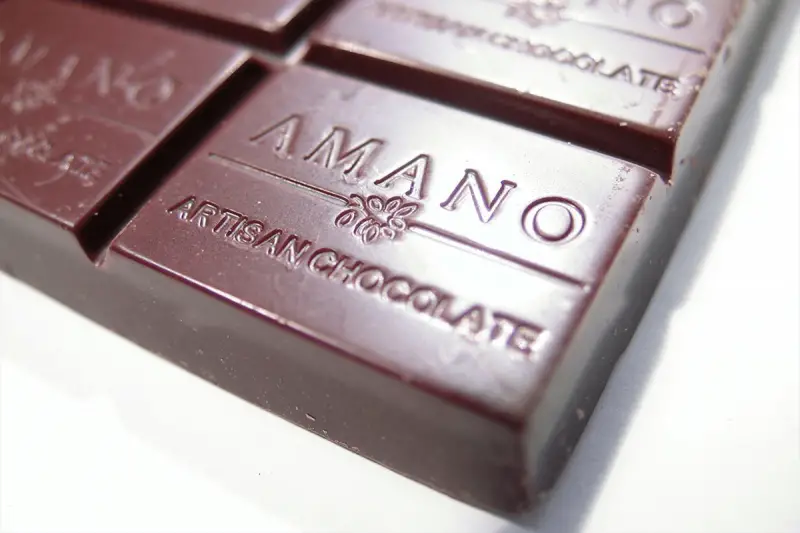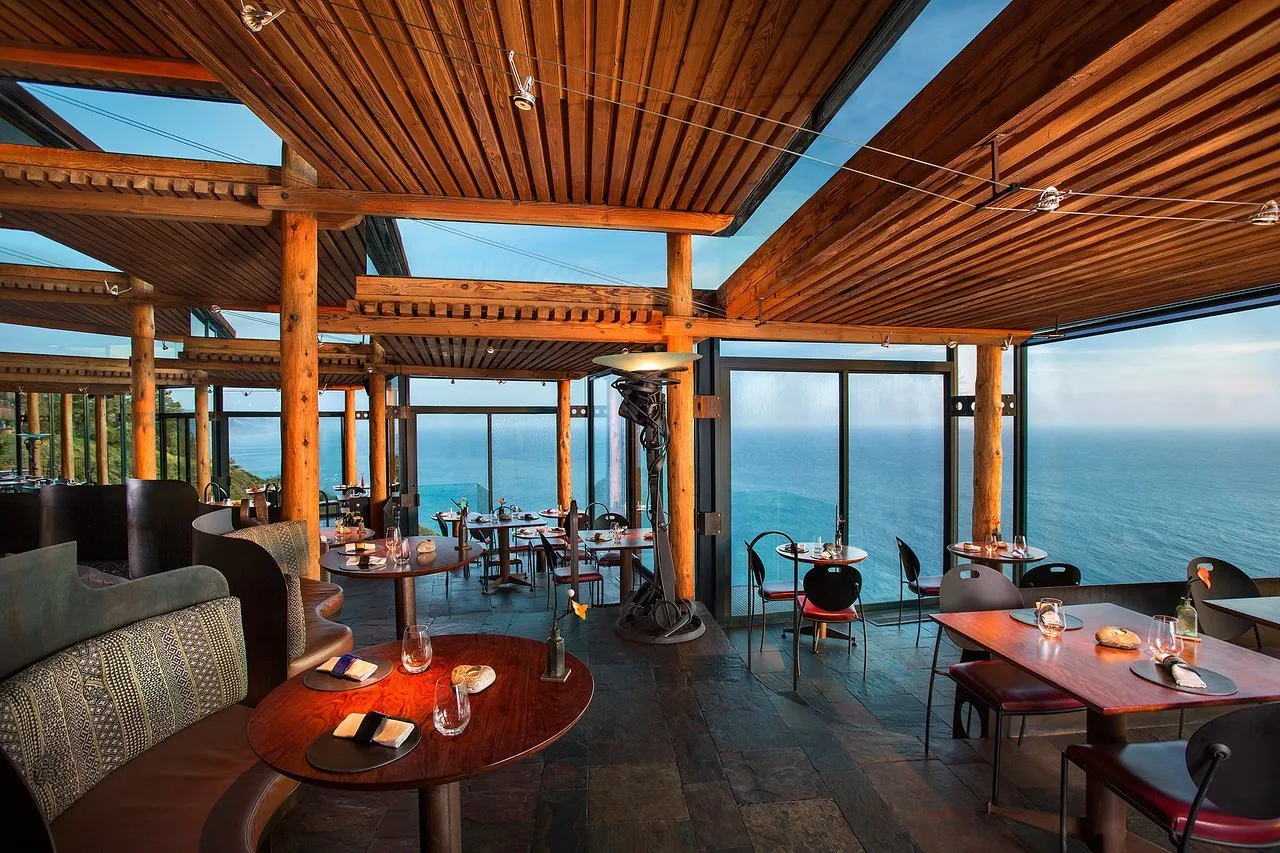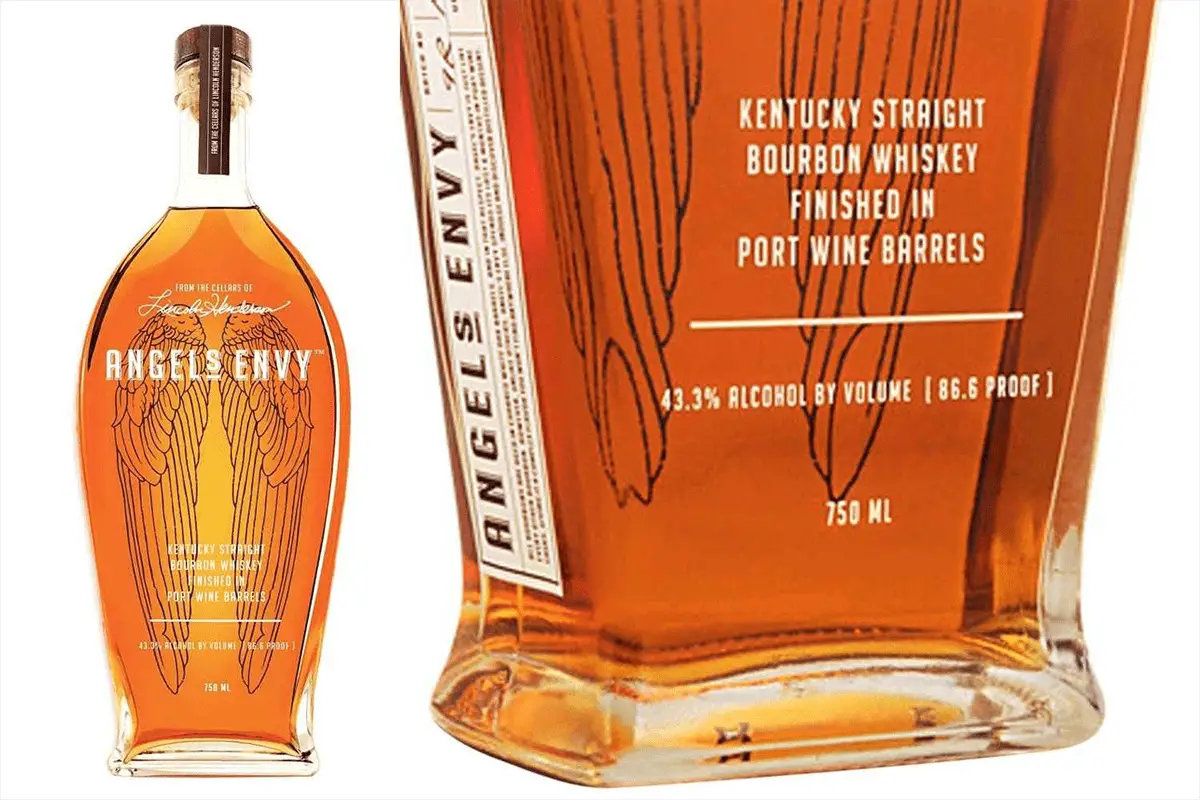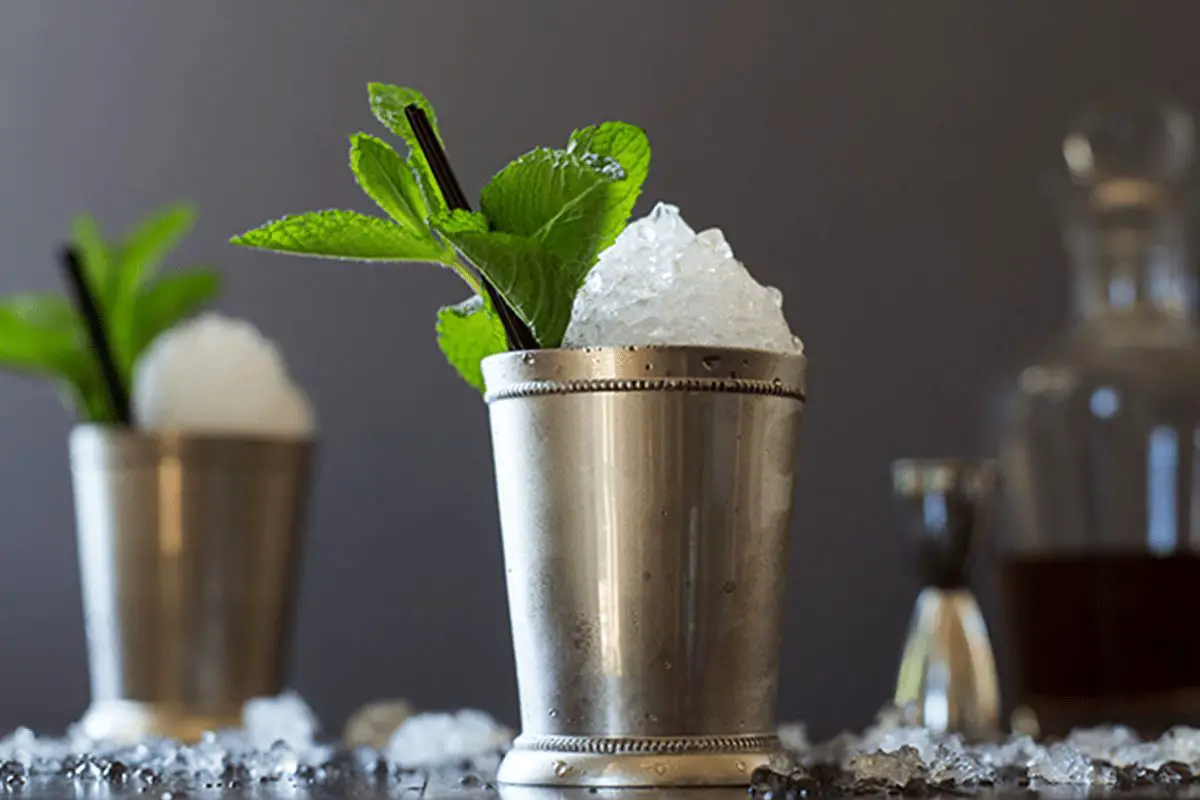Located high in Utah’s Wasatch Mountain range in the heart of the Rockies resides a small chocolate company—with huge arms —that produces some of world’s best chocolate. Meaning “by hand” and “they love” in Italian, Amano prides itself on sourcing only the world’s very best cacao beans and ingredients.
Their beans, of course, are not sourced in Utah but rather the lush rainforests and tropical regions of the world. In fact, all cacao beans are sourced between 20 degrees north and south of the equator. Amano visits plantations in these regions, buying from the growers, and when necessary working with them to improve their skill in properly growing, fermenting and drying the cacao beans to meet their exacting standards.
Through working with small, carefully controlled batches and lots of love and attention, Amano seeks not to be the largest chocolate company, but simply the best—and their myriad awards over the past decade reflect this commitment. So do the many Michelin-starred restaurants that use their chocolate—usually in melted form from discus shaped melting wafers—in their deserts.

I recently met with Amano’s founder and CEO Art Pollard and talked about chocolate and the many adventures that come with this trade. Here is what he had to say.
GLR: How did you get in the chocolate business?
Art: I grew up a die hard foodie and with a background in the hard sciences bouncing back and forth between Los Alamos, N.M. and Seattle. Both New Mexico and the Seattle area are great homes for food. When I was attending my university I worked for the physics department. One day while eating a German chocolate bar, I made an off-hand comment that it would be fun to make my own chocolate. My co-workers (who were working on space shuttle projects and particle accelerators) all said it was too hard. I thought that if it was that hard, it had to be insanely interesting. I love things that are hard and interesting.
A few years later, while on my honeymoon in Hawaii, I found an outlet for what, I thought at the time, was a truly spectacular chocolate. It was then that I realized that chocolate could be so much more than “chocolate”. Immediately upon our return, I started experimenting and designing and building my own machinery. Little did I know what sorts of adventures it would set in motion. It turns out that making a world class chocolate is indeed insanely difficult; in the end, my co-workers were right. However, by the time I discovered that my co-workers were fundamentally correct, I already had a factory.
GLR: Your chocolate has won many awards including gold, silver and bronze medals at the “Olympics of Chocolate.” What makes Amano so high quality and good?
Art: Fundamentally, like all world class products, it is about attention to detail. Even before we started Amano, I experimented for over ten years on different manufacturing techniques and how they affected flavor. Much of this was on machines that I designed and built. I credit my failures during this experimentation phase for teaching me many of the techniques that we now use today. Your successes never teach you the “whys” but your failures do. Even today, I am constantly experimenting with different ways of processing ingredients.

Like all food, it is only as good as the ingredients that go into it. To make a world class chocolate, it takes world class cocoa. Everything fights against it. The weather can interfere with the fermenting. Cocoa farmers often aren’t skilled at fermenting, after all, they don’t use the cocoa they produce. Genetics; the large chocolate companies encourage the planting of high productivity strains of cocoa with no regard to flavor. Plant diseases; the cocoa trees are particularly susceptible to. Never mind the problems caused the political unstableity of many cocoa growing countries. Given all this, I have found that having really strong relationships with the farmers is immensely helpful. When needed, we help train them to increase the quality of their cocoa. It is good for them and it helps us get the quality we need. And hopefully, we can instill the same sense of pride in their cocoa as we have for our chocolate. When people care about what they do, when they truly care, amazing things can happen.

GLR: Where are some of the most exotic places you have traveled, looking for cocoa beans?
Art: We currently purchase beans from: Dominican Republic, Venezuela, Papua New Guinea, Ecuador, and Madagascar. I try to work with all the farmers from whom we buy our cocoa. I’ve also traveled extensively through Central and South America, especially Peru and Honduras looking for cocoa. But one of my favorite places was visiting the tinyisland of Guanaja off the coast of Honduras. I was lucky enough to go with a group of some of the world’s finest chocolate makers. Guanaja was where Christopher Columbus first tasted cocoa. It was on his fourth voyage to the New World. Off the coast, he encountered a Mayan canoe laden with cocoa. He couldn’t figure out what it was for and ordered the cocoa dumped out. He couldn’t figure out why the Mayans were so upset. Now we know and I believe, we treasure cocoa just as highly as the Mayans. It was an amazing experience to be in such an important place in the European history of cocoa. And it was on Guanaja that we discussed how we can work together to ensure that the farmers that we work with could earn enough through their cocoa that they could have a livelihood. We dedicated ourselves to working together to ensure that cocoa would remain a sustainable crop and not stoop to using factory farming and to focus on flavor rather than stooping to high-productivity varieties as the large companies do. It was truly an amazing experience.
GLR: Some of the countries you have to visit to source cocoa beans are not exactly stable. Have you ever felt in danger while traveling the world for work?
Art: Yes, it is quite frequent that I end up in situations where if I were not with locals, it could have ended up in a very bad way. Many times the locals that I’m with are armed. I think we often forget that much of the world isn’t in a position to call law enforcement every time they are in trouble.
One time, I laugh about, was during a trip to Venezuela. We pulled into a small town where our hotel was. The entire town was deserted. It was like a scene from a Western movie. We became concerned that perhaps the town was run by drug lords. Right before our hotel, there was an enormous mob which we had to drive through. The mob parted slowly as we drove through. We found out later that yes, the entire town was run by the drug lords and it was the drug lords that were keeping us safe. The last thing they wanted was the Federales to be coming around. What a strange world we live in.
GLR: You don’t just sell chocolate “bars” but also chocolate wafers (discus form used for melting) that restaurant clients melt and use ON or as the primary ingredient IN desserts. What are some of the restaurants using your chocolate for their desserts?
Art: We have been blessed to have some of the world’s finest restaurants using our chocolate. Of course, every chef brings their own interpretation to their creations. But we are particularly proud to be working with Chez Panisse. We have had a long standing relationship with this legendary restaurant. Chez Panisse is the creation of Alice Waters who pioneered America’s fresh food prepared simply movement. Alice Waters and Chez Panisse have had an enormous impact on the way we eat in the United States whether we recognize it or not. Our chocolate Dos Rios (that naturally tastes like burgamot orange and lavender) has historically been a favorite among the chefs at the Fat Duck. Located just outside of London, the Fat Duck has been rated as high as the number two restaurant in the world. (And having eaten there, it deserves its amazing reputation.) The chefs we work with love the fact that our chocolates have such a wide range of flavors and it allows them to pair foods with chocolate in ways that they never were able to before.
GLR: I gather you are foodie. What other foods do you love besides chocolate?
Art: I like simple foods done well. I’m a big fan of steak and I cook a really mean steak. What I find fascinating is all steaks start with a simple piece of meat. The finished steak can be magic or not – all depending on what you do with it. Same with a good crème brule. It’s amazing how beautiful such a simple dish can be. I’ve had the wonderful opportunity to eat at some of the world’s finest restaurants and while I’ve had some amazing meals where a lot of work goes into them, the most stunning are the ones where simple foods are prepared exceptionally well. It takes a masterful chef to take something simple and turn it into something world class. Along those lines, Thomas Keller has said the way you can judge a chef’s skill is to order the roast chicken. Even so, the true king in my book is an exceptional chocolate. Chocolate after all is the “food of the gods”.
GLR: Have you ever traded your chocolate for other goods?
Art: Yes, one of my favorite trades was for a camera backpack from F-Stop. When I was in college, I worked through the photography program (even though it wasn’t my major) under an amazing photographer and professor John Telford. As I travel the world visiting our farmers, looking for cocoa and working with great chefs, I get to practice my photography. It helps me to always see the world with fresh eyes and appreciate the moment. It is hard to find a good camera bag. One day I found F-Stop to absolutely amazing reviews. I called and the sales person discovered I run Amano Chocolate. It turns out that they were regularly giving our chocolate to their suppliers as gifts. I proposed a trade and their response was: “Done.” I have been absolutely thrilled with my F-Stop camera bag and have taken it all over the world and on many adventures.
GLR: What is the most satisfying part of your job?
Art: I believe that chocolate touches us in ways that few other foods do. It is there for births, deaths, weddings, birthdays and our day to day lives. When people taste chocolate that is truly extraordinary, it touches them in a way that is often surprising. It isn’t like regular store bought mass market chocolate, it is sooooo much better. I love being able to see the expression on people’s faces when they try our chocolate. I especially love taking the finished chocolate back to the farmers we work with. It is rare for farmers to be able to taste chocolate made with their very own beans. The expressions on their faces of pure joy when they taste chocolate made with their own beans is priceless. Then when they learn that their cocoa has been turned into chocolate that has received some of the world’s highest awards, you can see their sense of pride grow in their eyes. Nothing is more special than that.
GLR: How was chocolate first invented?
Art: The cocoa beans in the cocoa pod are covered by a sweet white pulp. It tastes like a flowery lemon-aid. It is delicious. Animals will often burrow into the pods to eat this beautiful pulp. The cocoa beans on the other hand are bitter and tannic. They are literally spitting bad which is of course how the tree propagates when the animals spit the beans onto the ground. The current state of research seems to indicate that the first cocoa was harvested for the sweet pulp not to eat but to ferment into alcohol. Or as I like to say: “Never underestimate people’s ability to find a new way to get plastered.” When the cocoa beans are fermented with their pulp, they change. The fermenting breaks down the tannic and bitter components and the flavor of the beans change into something beautiful and wonderful to eat. It is hard to find farmers that ferment cocoa well, but when cocoa is, it is amazing. From the roasted cocoa we had drinks for a few thousand years. Some Catholic nuns in Oxwere the first to sweeten it with sugar and honey in the late 1500’s. By the late 1600’s the prelude to what we now recognize as chocolate bars was beginning to be sold in Europe. Chocolate has a truly amazing history. And like history, it has its demons and heroes and every time we eat a chocolate bar, we become part of that amazing journey that is chocolate.



